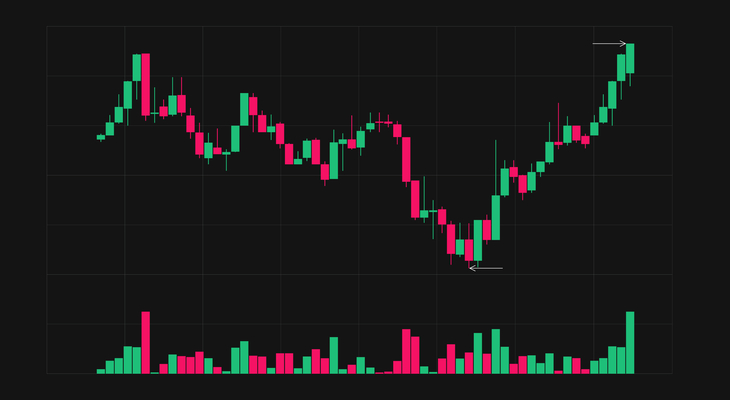Sell Stop Limit orders have become increasingly popular among traders seeking to maximize profits and reduce risk. According to recent research, this order type is used by over 75% of traders worldwide.
Sell Stop Limit orders are used to place pending orders below the current market price and set a Sell Limit order at a higher price level, allowing traders to benefit from temporary price increases. This order type provides numerous benefits, such as better prices, risk management, and control over timing.
However, it is important to be aware of the risks that come with trading leveraged products. This article will explore the advantages and disadvantages of Sell Stop Limit orders and provide a disclaimer about the risks involved.
Key Takeaways
- Sell Stop Limit orders are popular among traders for maximizing profits and reducing risk.
- Traders benefit from temporary price increases using Sell Stop Limit orders.
- Sell Stop Limit orders provide better prices, risk management, and control over timing.
- There is no guarantee of execution with Sell Stop Limit orders.
What is It?
A Sell Stop Limit is a pending order type on the MetaTrader 5 platform that combines Sell Stop and Sell Limit orders. It specifies a price below the current price and places a Sell Limit order at a higher price level (Stop Limit price) only if the Bid price reaches the specified price.
This tool is used by traders anticipating a temporary price increase before a decline. It helps them fill orders at better prices, manage risk, and control timing. Pros and cons, as well as how to use this tool, should be taken into account before implementing it.
The Stop activates the Limit Order to sell, while the Limit specifies the lowest acceptable price. There is no guarantee of execution, and the order will last until its set expiration time if the Price is not reached. It can be canceled at any time.
While this tool provides advantages, investors should be aware of the risks involved. It is important to seek independent financial advice if the risks are unclear.
Benefits and Risks
Utilizing Sell Stop Limit Orders can offer traders the potential to secure advantageous prices and manage their risks effectively. They are ideal for those anticipating a temporary increase in price before a decrease, as they combine Sell Stop and Sell Limit orders, with the Stop order activating a Limit order at a higher price level. This helps to ensure that the order is filled at the best possible price, while also allowing traders to control the timing of their trades.
| Benefits | Risks |
|---|---|
| Lower prices | Market risk |
| Better timing | Leverage risk |
| Risk management | Execution risk |
It is important to note that there is no guarantee of execution when using Sell Stop Limit orders, and these orders can be canceled at any time. Furthermore, trading leveraged products are high risk and investors may lose more than their initial investment. Therefore, it is important to understand the risks and seek independent financial advice if they are not clear.
Disclaimer
It is important to note that there are disclaimers regarding investment advice and future performance when using Sell Stop Limit orders. These disclaimers include:
-
Trading leveraged products involve high risk and there is no guarantee of execution.
-
Do not risk more than you can afford to lose, as it is possible to lose more than your initial investment.
-
Seek independent financial advice if the risks are unclear.
FXTM and its affiliates do not guarantee accuracy or completeness of information, and there is no liability for loss arising from any investment based on the information.
It is important to understand the types of pending orders and the importance of risk management when using Sell Stop Limit orders.
Additional resources, such as videos, articles, ebooks, and a glossary, are available to further understand this topic.
Additionally, traders have the option to practice trading and open a real money trading account.
Frequently Asked Questions
How do I set a Sell Stop Limit order?
Answering the question of how to set a Sell Stop Limit order requires evaluating the desired scalping tactics and assessing the risks involved.
To begin, the trader must select a price below the current market rate and determine the Stop Limit price. As the Bid price reaches the set Price, the Sell Limit order is activated. This enables the trader to fill orders at better prices and manage risk. At the same time, they can control the timing of their orders.
However, it is important to remember that there is no guarantee of execution and it is possible to lose more than the initial investment. Therefore, traders should exercise caution and seek proper financial advice.
What is the difference between a Sell Stop and a Sell Limit?
The Sell Stop and Sell Limit orders are two distinct strategies used in short selling.
Whereas a Sell Stop order is triggered when the market price reaches a pre-determined level, the Sell Limit order is activated when the market price reaches a higher level than the Stop Loss order.
This allows traders to identify potential market reversals and take advantage of them, while also reducing their risk exposure.
By combining the two orders, traders can take advantage of the price movements more effectively, unlocking better prices and risk management.
What happens if the Price is not reached before the expiration time?
If the price is not reached before the expiration time, then the Sell Stop Limit order will remain in effect until the set expiration time.
The Sell Stop Limit order will not be executed if the price does not move to the desired level. This is because the order is dependent on the price movement and the time frame, and if the price does not move to the desired level within the set time frame, then the order will not be executed.
Therefore, traders need to carefully consider the time frame of their order and the possible price movements.
How much money should I risk when trading with leveraged products?
Exploring the Current Question of how much money one should risk when trading with leveraged products requires thoughtful consideration.
Utilizing a risk reward ratio, traders should strive to invest only a portion of their capital in order to maintain a healthy balance of potential reward and risk.
Additionally, setting a stop loss order can help protect against large losses in the event of an unexpected market movement.
By controlling the amount of capital risked and utilizing a stop loss order, traders can ensure they are trading responsibly and with freedom.
Are there any other resources available to help me learn more about Sell Stop Limit orders?
Yes, there are additional resources available to help understand sell stop limit orders, such as short selling and risk management.
For example, there are numerous educational articles and eBooks on the subject, which provide detailed analyses on the fundamentals of sell stop limit orders.
Additionally, online trading platforms offer videos and glossaries to help traders better understand this order type.
Furthermore, traders can use practice accounts to test their understanding of sell stop limit orders and risk management before opening a real money trading account.
Conclusion
Sell Stop Limit orders offer a variety of advantages, such as better prices for trades and better risk management. However, there are also risks associated with trading leveraged products, as it can involve high risk and potential for great losses.
To successfully use Sell Stop Limit orders, traders must have a thorough understanding of the order type, its benefits, and its risks. For example, a trader may use a Sell Stop Limit order to limit losses on a trade by setting a stop limit price below the current market price.
Ultimately, Sell Stop Limit orders can be a valuable tool for traders who want to take advantage of better prices and manage their risk.












